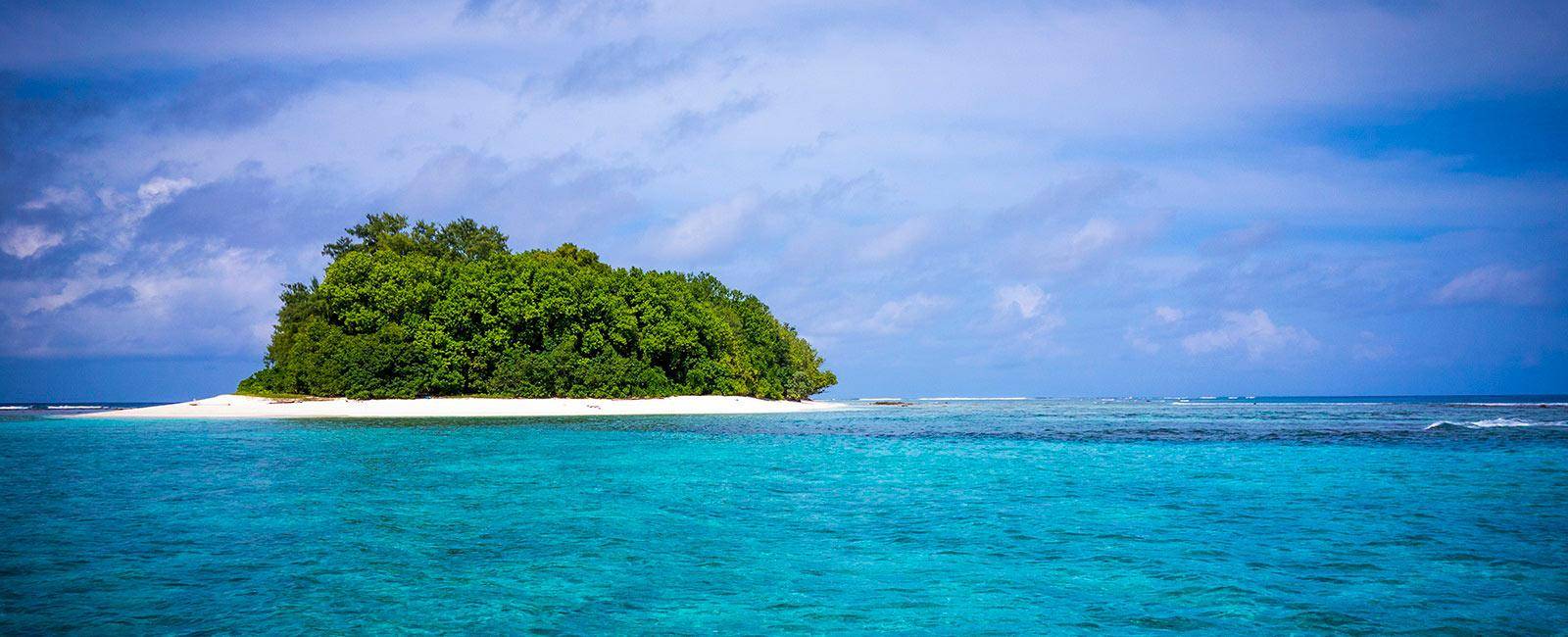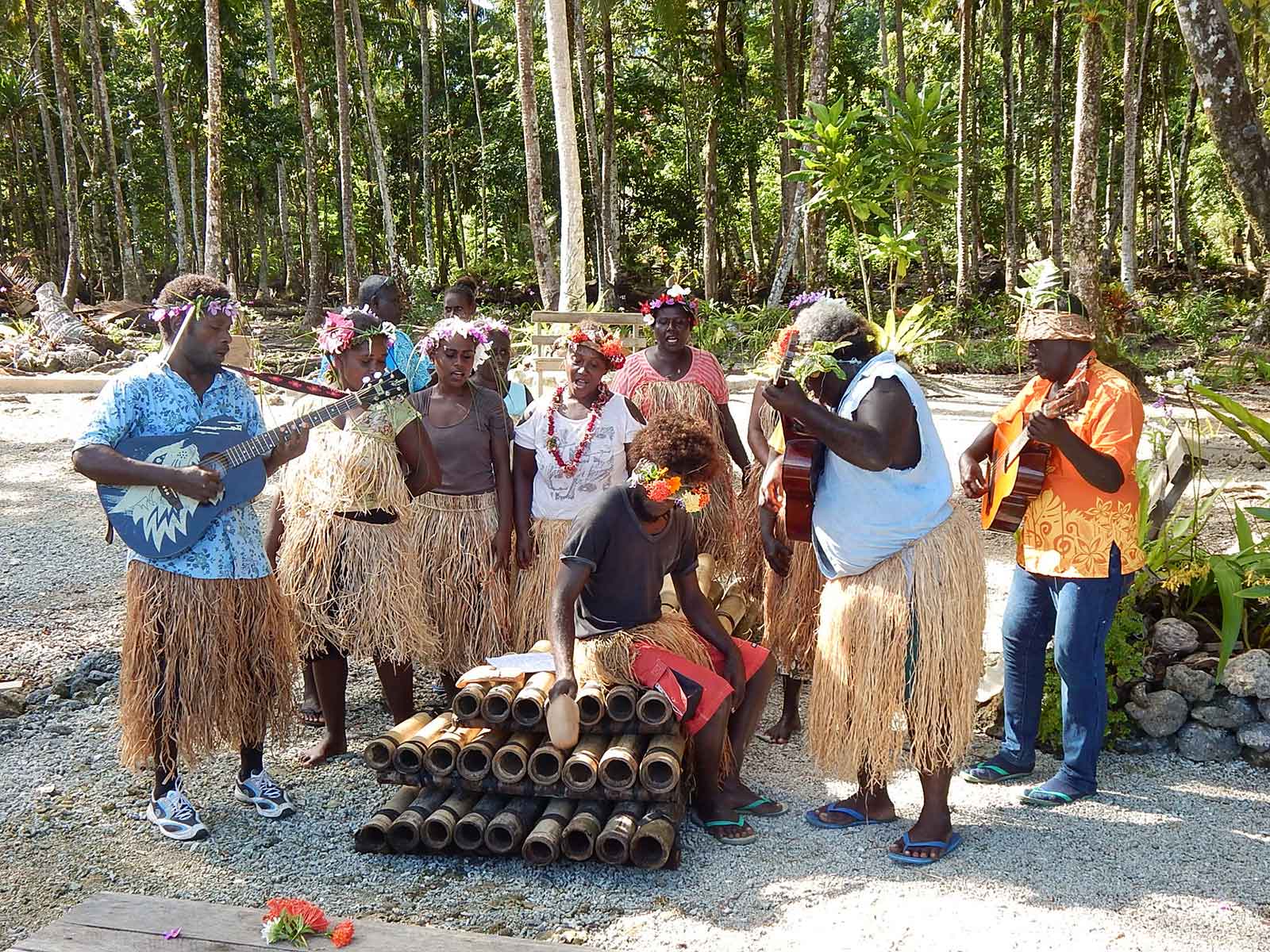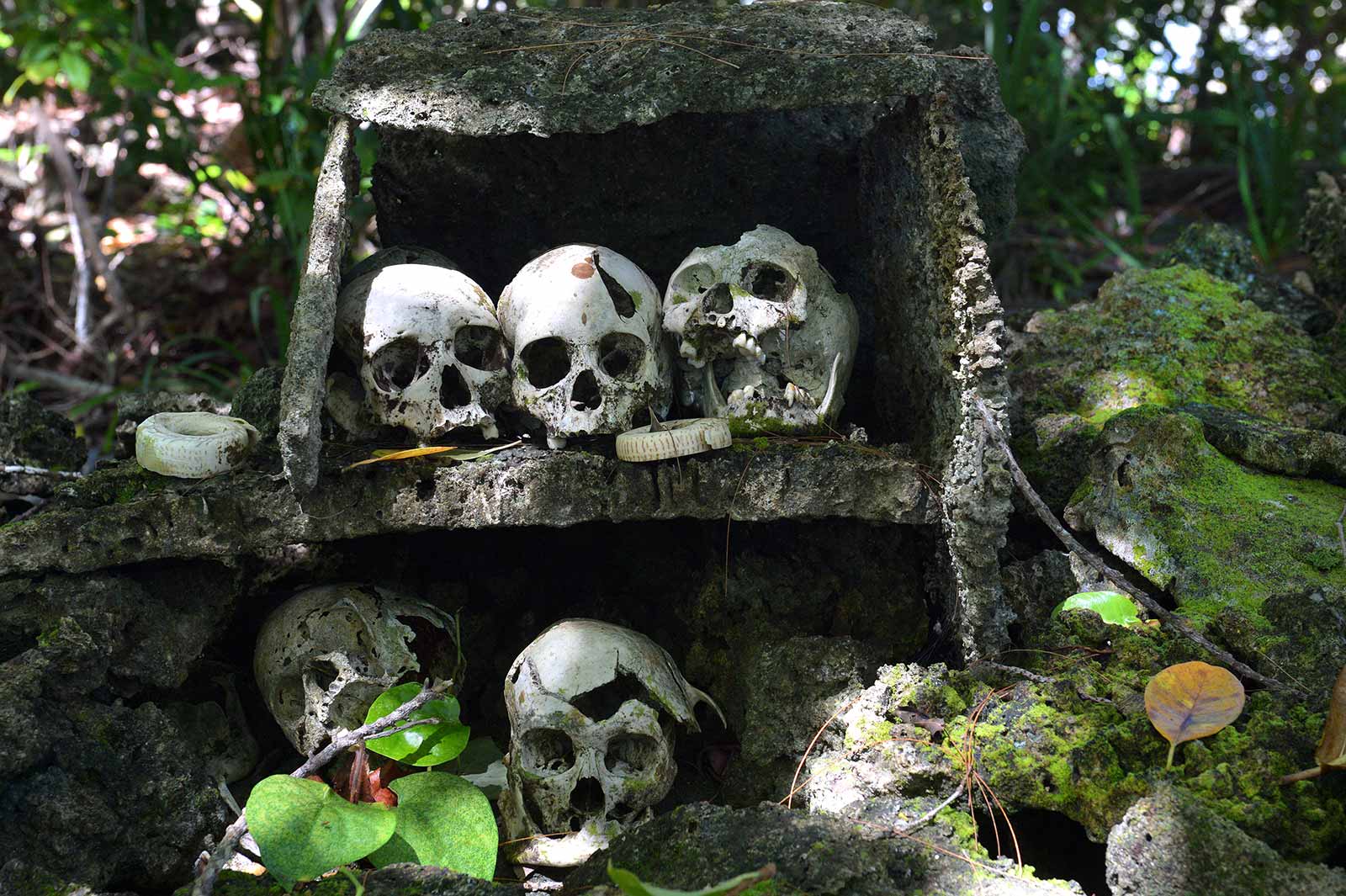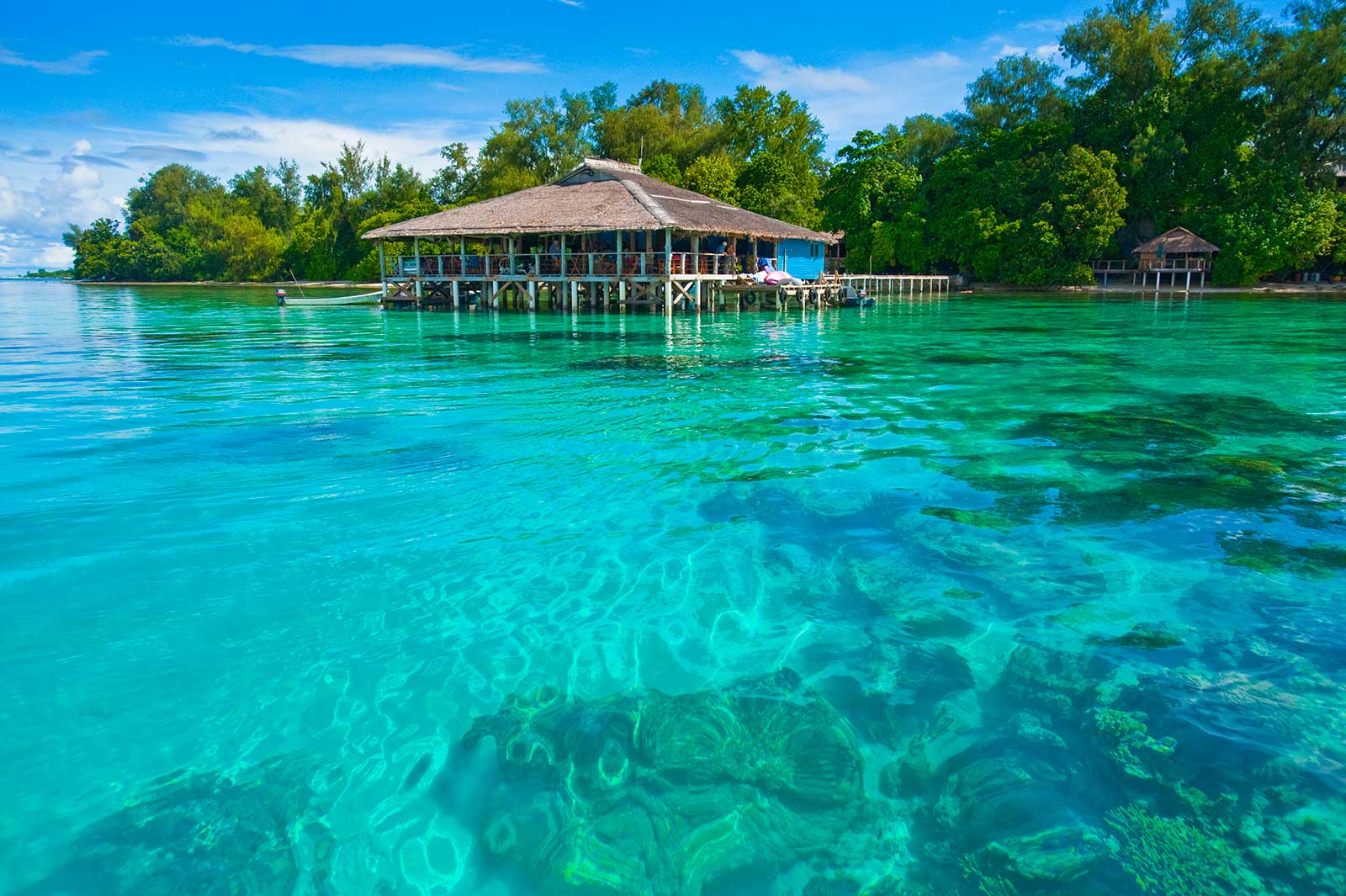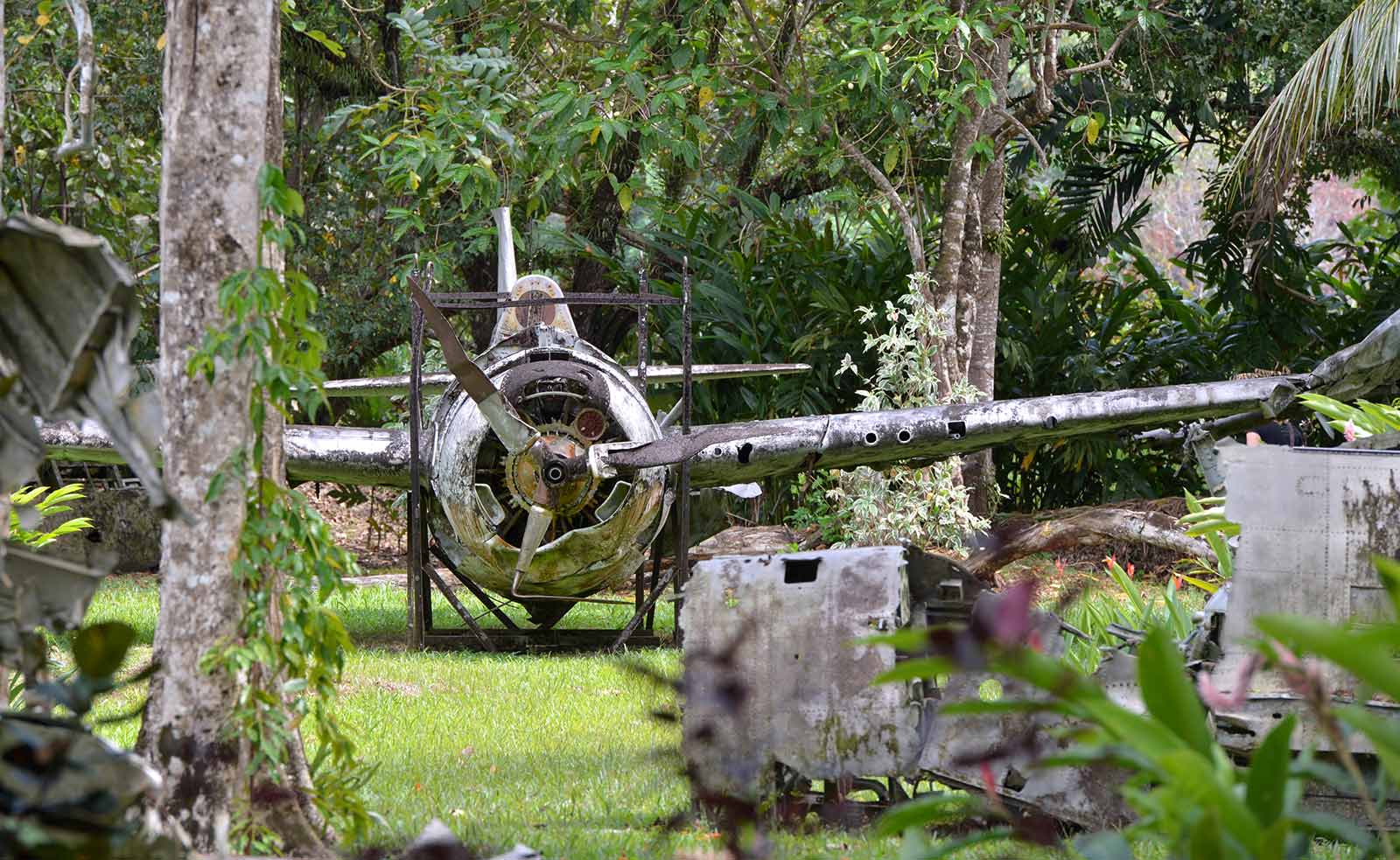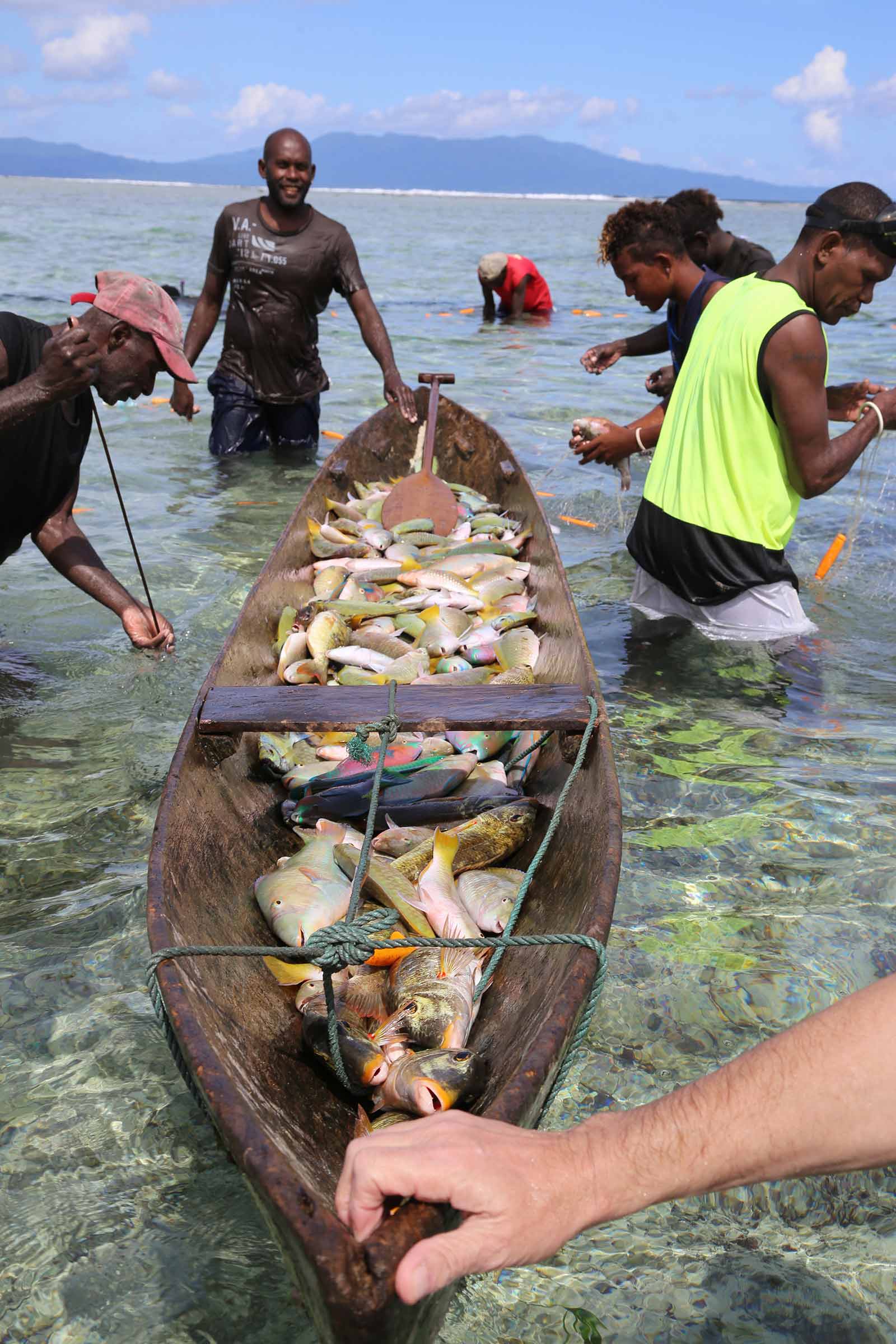
I've never really been a fan of fishing, probably because on the few occasions I've ever been I've never caught anything - but clearly I have been trying in all the wrong places. After an overnight stopover in Honiara it's just one hour plane hop to Munda, on the island of New Georgia, and I'm about to learn something about fishing from experts. Fishing is a way of life in the Solomon Islands - there's a plentiful supply and it's a staple of the local diet but when a big catch is required - for a large family or community gathering - they have a unique way to ensure a big catch.
Day One
We're invited to tag along on just such a fishing expedition and told to wear swimmers and bring a snorkel! Out in the lagoon on the edge of a shallow reef we watch from a distance while a canoe drifts out from the island shore, a huge mass of green vine piled up in the middle. Slowly, the vine is rolled out from the canoe and a team of fishermen walk in the shallows to hold it in place in a massive circle, then when it is all out, they slowly draw the circle in, smaller and smaller. When the circle is quite small we are invited to help hold the vine and draw it in ever smaller, and a quick dip under the water is like looking into the Seaworld Aquarium - by now the shallows are teaming with coloured fish of all shapes and sizes and, surprisingly, they make no attempt to swim beyond the vine.
The next bit is nothing short of stunning. On the signal from the senior fisherman, a 'magic mix' is thrown into the water - apparently some special blend of vine leaf and sand - which acts like a natural sedative and the fish are almost immediately tranquilised. Most float, while others jump and dart in a frenzy and we, and the fishermen, are catching and scooping as quickly as we can to get them into a canoe. When we're finished it's almost full.
It's been a hilarious dance in the shallows on our part with lots of whooping and splashing but it's been an extraordinary experience - and we're rewarded for our efforts with some fish for lunch which we have on a nearby shore, barbecued over hot coals and washed down with coconut milk, spicy seaweed, sweet potato, rice and salad. There's time for a swim before we head back to Agnes Lodge at Munda.
Day Two
The next day it's a rollercoaster ride to Rendova, a large volcanic island about 40 minutes from Munda. The slight swell on the deep water is enough to cause our boat to slap from crest to crest all the way to the wharf at Titiru Eco Lodge, where we're met in fine island style by a band of musicians. In contrast to the island beaches we've seen so far these sands are black and the south west coast of the island is an important nesting ground for endangered leatherback turtles. Local villages there are the base for a conservation program.
Titiru Eco Lodge is less than five years old and is considered a model for environmentally sustainable tourism in the area. It's a gateway to local villages for visitors and it provides an opportunity for locals to learn hospitality skills. The closest village of Ugele is just a short walk away and the locals are happy to demonstrate their talents in carving, making 'toys' bracelets and headbands from palm fronds and impromptu 'cooking classes' in how they make favourite dishes - one from a nut that would be poisonous if not treated the right way! While we're here just for a day, guests of the Eco Lodge can try climbing Rendova Peak, visit the Wild Cave (if you like bats, crabs and snakes), go night crabbing or go exploring in a dug-out canoe.
Day Three
There's a reason we're told to keep our bags to 16kg or less once we leave Honiara - it's a smaller plane ride to Munda, but from Munda we're travelling by boat to Gizo and a spinner suitcase is no help on a plank jetty or a sand track to beachfront bungalows.
On the way we stop at Kundu Hite, otherwise known as Skull Island. It's only small just a few metres wide, and the resting place of long dead chiefs and warriors, or their skulls anyway. We are warned not to set foot on the island before the guide or bad things may happen. Apparently some cocky person didn't heed the warning months back and inexplicably collapsed before he got back to the hotel. They had to call in a village healer to revive him. Another time a journo who had picked up a skull for a photo says he had dreams that night of an elder reprimanding him and was so spooked he immediately erased all his skull pics from his camera in a fit of remorse. Needless to say we tread lightly, touch nothing and quietly retreat to the boat.
It's fitting that we arrive early at Fatboys Resort on Babanga Island in time for lunch and the boat pulls up alongside the restaurant on a jetty 100 metres from shore. The resort, owned by Brisbane locals, takes its name from the character Joe in the classic Charles Dickens novel The Pickwick Papers - Joe, 'the fat boy', loves eating, drinking, sleeping and generally avoiding every effort to work at all and we need no convincing to do the same, starting with a lunch of crayfish and salad.
By now we've been dining out on crayfish almost three meals a day. At Fatboys it's delivered by canoe every morning and so it's possible to have it at breakfast (omelette), lunch (barbecue grilled) and dinner (curry). Manager Mano and barman Timmy are perfect hosts.
The afternoon is free for snorkeling (straight from the beach), kayaking, paddle boarding, swimming or snoozing, but for travelling a bit further afield there's a cute little thing called a Polycraft, a small plastic boat no bigger than a tender, with a collapsible shade and a small motor on the back (it turns out they're made in Bundaberg and 100 per cent recyclable). Two of us decide to take one out to a sand cay we see in the distance for a Robinson Crusoe adventure. It turns out to be only about 15 minutes away and we jump out on the sand to make first footprints on a truly untouched piece of paradise. It's perfect for a swim, a little walk and a dramatic skyline view, which changes quickly as we take photos. As the distant sky gets greyer we decide to head back and as we do we keep an eye on the rolling clouds behind us. There's an adrenaline charge but we make it back before the rain hits and the screens are pulled down in the bar.
From Fatboys it's less than 10 minutes by boat to Gizo township where there are shops, hotels, dive shops, and small villages to visit on the way.
Day Four
Like many of the Solomon Islands, Kennedy Island is uninhabited but it's a popular picnic spot, made famous by John F. Kennedy who hid out here after his boat was gunned down in World War II. There was a heroic rescue - he swam to another island and a message scraped on a coconut alerted the navy base on Rendova to where they were hiding. Emboldened Polycrafters now, we navigate our own way there and join the others for a barbecue lunch and an afternoon of snorkeling around old jetty pillars.
On our last night at Fatboys, we celebrate new friends with a local tradition called the 'wine down' and the esky is packed and folding chairs stacked in the boat for a cruise out to another sand cay, Simbu-Batu, to watch the sunset. Beautiful.
Day Five
Guadalcanal is the first and last island for travellers from Brisbane, home to the capital city Honiara and international airport. It has all the city trappings - luxury hotels like the Heritage Park, hot showers, day spas, busy streets and traffic jams - but it's also the place to learn about the role the Solomon Islands played in World War II.
The Guadalcanal American Memorial on Skyline Drive not only tells the story of the Allied offensive on huge granite tablets, it provides a magnificent aerial view of Honiara. Another place to see war relics is Vilu Museum on the western side of Honiara. It would be impossible to find without a tour guide as it's camouflaged in the bush but it shelters hidden treasures, from both sides of the war, including cannons and remnants of aircraft such as a Japanese Betty Bomber and a Wildcat with its signature folding wings (still working). Talina Anderson is the granddaughter of the owner and she is a knowledgeable guide to every piece in the collection. Tours can be booked from the Heritage Park Hotel.
GETTING THERE
PLAN YOUR TRAVEL

